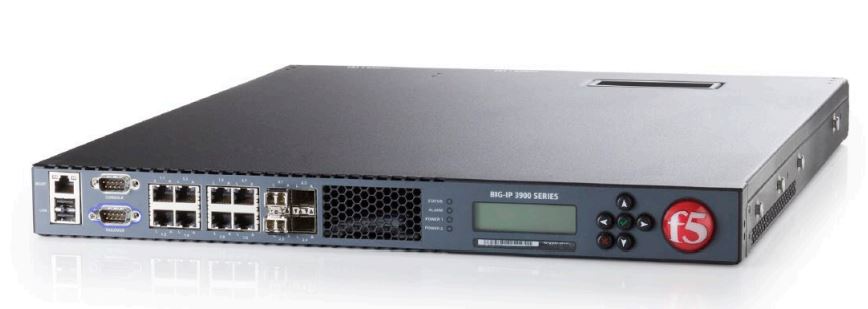
If you are trying to decide which load balancer product is right for your business, you’ve probably already discovered that it’s a market of two extremes. There are load balancers with very low prices, and load balancers with very high prices; products with standard features; and others with absolutely exceptional features.
These two extremes are typified by the vendors Kemp Technologies and F5, which each occupy the polar ends of the load balancer market. If you want to understand which side of the market you need to be shopping at, here’s my unbiased comparison of F5 and Progress Kemp.
F5 BIG-IP v Kemp LoadMaster: Price comparison
The first and most obvious point of difference is price. F5 BIG-IP load balancers are the most expensive on the market, while Kemp load balancers (known as Kemp LoadMasters) are much more reasonably priced. This reflects the range of features provided by each vendor. F5 products, it is generally agreed, offer all the features that you might ever need — and a great many more that you will almost certainly never use.
In contrast, less complex products, such as those provided by Kemp, offer a robust but standard range of features, designed to meet the load balancing requirements of the majority.

F5 v Kemp: Application usage
The size of your business and the scale of your application usage will be key factors in determining whether you are justified in making an investment in F5. Typically, F5’s customers use their solutions for around 300 load-balanced clusters (called virtual IPs) and handle more than 3 Gbps throughput and over 10,000 SSL transactions per second (TPS).
As a point of comparison, the majority of Kemp’s customers are likely to have somewhere in the region of 2-5 load balanced clusters, with less than 100 Mbps throughput and less than 5 SSL TPS. Obviously, there’ll be exceptions at both ends of the scale, but these figures probably sum up your typical customer.
F5 BIG-IP v Kemp LoadMaster: Extras
F5 load balancers are mature products engineered to meet the demands of the world’s largest multi-national corporations. They offer compliance with pretty much every industry standard, can balance traffic across global locations, and incorporate advanced application security features, such as web application firewalls (WAF) and virtual private network (VPN) capabilities.
By contrast, Kemp customers would probably need to buy separate WAF and security appliances, as the in-built features are far less robust than F5’s, and not all of Kemp products are fully certified or validated for all industry standards.

That said, if you are not the IT manager of a large or multi-national business, there is much to be said for the relative simplicity of the products offered by companies like Kemp.
F5 products will take longer to procure and implement and will probably require a team of in-house, F5-accredited technicians to manage and maintain. Kemp’s less feature-rich alternatives are almost off-the-shelf products, designed to be more plug-and-play. They can be procured and implemented easily and managed in-house with your existing teams. And, don’t forget, F5 and Kemp both offer the same choice of hardware-based, virtualized, or cloud load balancers.
Other options at opposite ends of the spectrum
While F5 stands out at the top end of the load balancer market, other popular high-end options include the Citrix NetScaler which is also created to optimize, manage, and secure network traffic in more weird and wonderful ways than you can probably think of.
There are also a number of well-established companies that provide comparable solutions to those offered by Kemp, including Loadbalancer.org. Indeed, Kemp and Loadbalancer products use the same open-source software stack, making the feature set extremely similar. So, if you have, after reading this blog, decided you are more at the Kemp end of the market than the F5 end, don’t assume Kemp is your best option. It might be. But it might not.
The Kemp LoadMaster alternative: Loadbalancer.org Enterprise
Before making your decision, there is one critical success factor that you must consider: support. It doesn’t matter how fast the throughput of your chosen solution, or how great the value for money; if you cannot get the help you need to optimize its performance in your network, or resolve unexpected issues, you will not achieve your application uptime goals.
Unsurprisingly, F5 offers a high standard of technical assistance (at a high cost), which is necessary to support their complex product range. Kemp, on the other hand, relies on its resellers to provide first-line support, which can lead to delayed issue resolutions, and an unnecessary degradation in the user experience in the meantime.

Loadbalancer bridges this gap, offering a suite of products with the same features and affordable pricing as the Kemp LoadMaster, but with the top-quality support you might expect from F5. Our customers never have to pass through a reseller (unless they want to!) and, given the simplicity of our products, we can identify and resolve issues very quickly, for an annual support fee that is significantly less than F5’s. All our engineers have in-depth knowledge of our products, offering tierless support, and an ability to help you optimize your configuration, or your customers’ application environments.
Which load balancer?
After reading this blog, you should now have a clearer idea about whether F5 should be on your procurement shortlist or Kemp. Just remember this. It may be a market of two extremes, but you’ve got more than two choices.
If you have any questions about any of the above, feel free to book a meeting with one of our technical experts, or try our fully-featured load balancer FREE for 30 days.
















